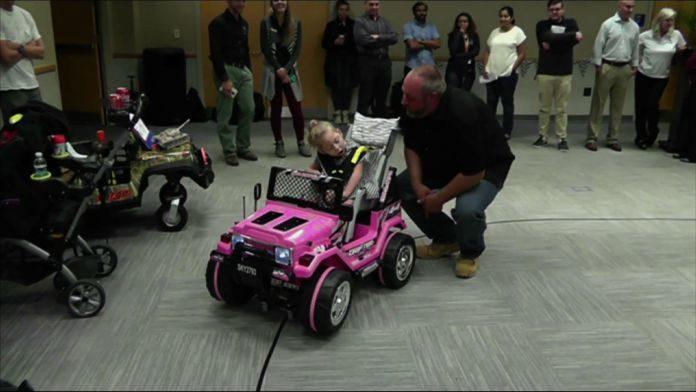Many shopping websites and stores are available that sell toys for disabled children. For example, many toy makers sell dolls with wheelchairs and crutches. Such toys are specially designed for children with disabilities. Similarly, scientists from the University of North Florida have developed Hi-tech toys for disabled kids by combining engineering and physical therapy.
Scientists converted toys from store shelves into custom-made fun for disabled children through these Hi-tech toys.
Because of her cerebral palsy, 4-year-old Scarlett Wilgis has trouble opening her hands and can’t get around without help. Her parents have scoured store shelves and websites looking for toys for her but have mostly been disappointed.
Dr. Alison Cernich, a neuropsychologist, said, “The agency funded the program because it forces students from different fields to collaborate and solve a problem in the community.”
“This program is getting students in the early phases of their training thinking about ordinary objects, toys, and how to adapt those toys so that children with limitations can use and play with them like children without limitations,” she added.
Chris Martin, an electrical engineering student, first removed the hood of Scarlett’s car by exposing its wires. He replaced the steering with a large push button and mounted light sensors under the car. It allows the car to follow a line of tape along the floor whenever Scarlett hits the button. Scarlett’s parents can also design a route for the car with tape through this design.
The cars retail between $250 and $500; the customization makes them worth well over $1,000. The families, about 18 so far, get the cars free.
Professor Mary Lundy said, “Engineering students teach the physical therapy students how to modify basic electronics. And in the process engineers learn how to do people-centered designs, and how to look at their clients differently.“
This field focuses on augmented mobility. It means these high-tech toys will give kids a way to move around to be more independent.
After weeks of work, Scarlett finally tested the car Martin and his colleagues built. They strapped her in and showed her how to hit the push button in the toy she would hopefully use for at least three or four years. The car drove forward, and Scarlett rocked back and forth.
Dezaraye said, “For her, she’s going to be able to get out more and not be trapped in a wheelchair. And for us, it’ll be nice to see her interact with other children. It’s amazing.“
